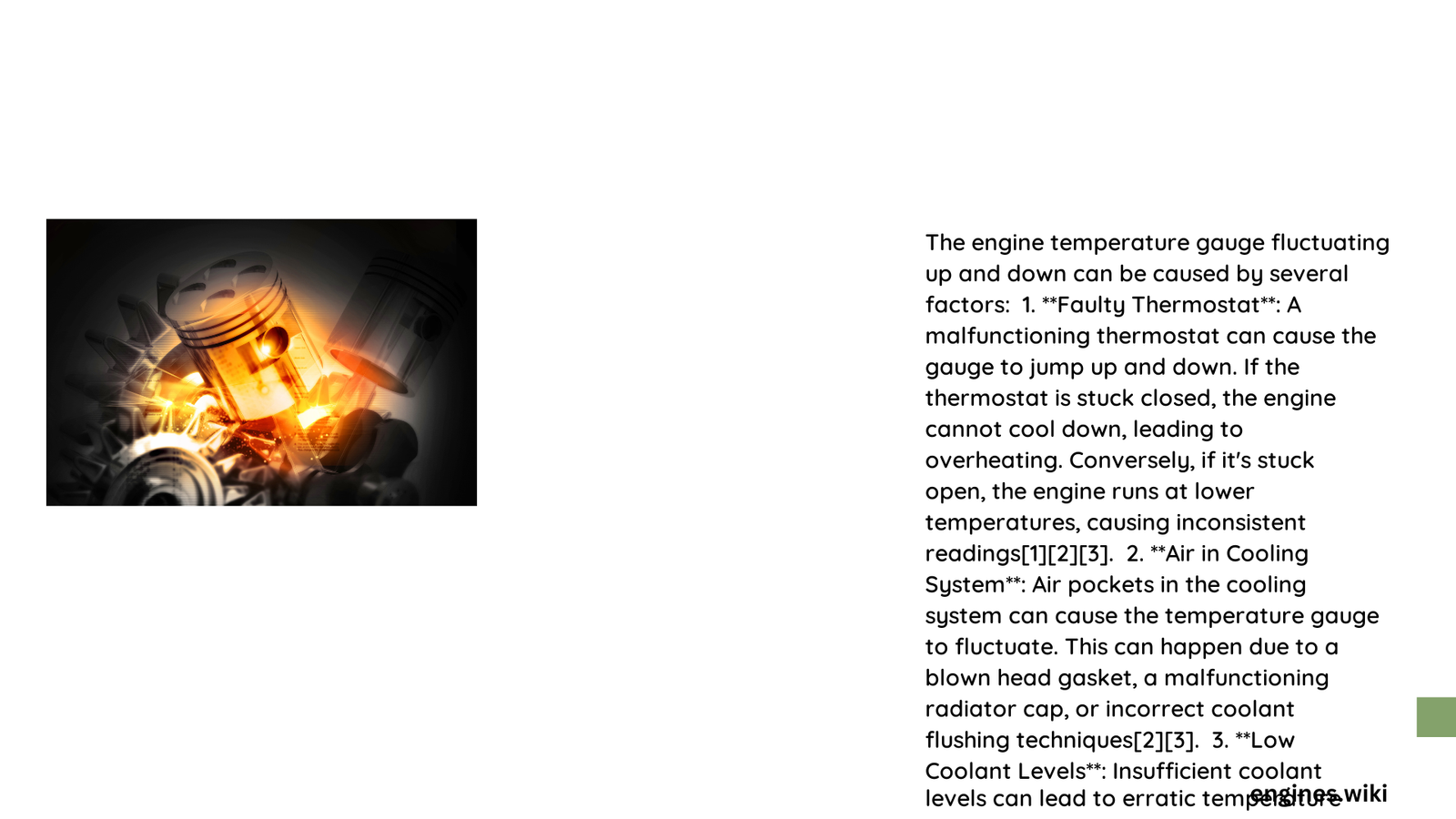Vehicle engines are complex systems where temperature fluctuations can signal critical underlying issues. When an engine temperature gauge goes up and down unexpectedly, it often indicates potential problems within the cooling system, ranging from minor sensor malfunctions to serious mechanical failures that could compromise engine performance and longevity.
What Causes Engine Temperature Gauge Instability?
Why Do Temperature Readings Become Unpredictable?
Temperature gauge fluctuations stem from multiple interconnected factors within a vehicle’s cooling infrastructure. Understanding these mechanisms helps diagnose and resolve potential problems efficiently.
Key Diagnostic Factors
| Factor | Potential Impact | Severity |
|---|---|---|
| Coolant Level | Direct temperature regulation | High |
| Thermostat Function | Coolant flow control | Critical |
| Radiator Condition | Heat dissipation efficiency | Moderate |
How Does Coolant Influence Temperature Stability?
Coolant serves as the primary heat transfer mechanism in engine systems. Low coolant levels or undetected leaks can dramatically affect temperature regulation:
- Insufficient Coolant Volume: Reduces heat absorption capacity
- External Leakages: Creates unpredictable cooling performance
- Internal Leakages: Compromises overall system integrity
What Role Does the Thermostat Play?
The thermostat acts as a critical temperature management component:
- Regulates coolant flow based on engine temperature
- Prevents premature coolant circulation
- Maintains optimal operating temperature range
Thermostat Malfunction Symptoms
- Erratic temperature gauge movements
- Inconsistent heating performance
- Unexpected engine temperature shifts
Can Radiator Issues Trigger Temperature Fluctuations?
Radiator efficiency directly impacts temperature stability:
- Blockages: Impede proper coolant circulation
- Corrosion: Reduces heat transfer capabilities
- Physical Damage: Creates uneven cooling patterns
How to Diagnose Temperature Gauge Inconsistencies?
Professional diagnostic techniques include:
- Visual system inspection
- Pressure testing cooling infrastructure
- Electrical connection verification
- Comprehensive sensor evaluation
What Are Potential Repair Strategies?
Recommended intervention approaches:
- Verify coolant levels and quality
- Test thermostat functionality
- Inspect radiator for potential obstructions
- Check temperature sensor connections
- Evaluate overall cooling system integrity
When Should Professional Intervention Be Considered?
Immediate professional assessment becomes crucial when:
- Temperature fluctuations persist after initial troubleshooting
- Significant temperature range variations occur
- Additional warning indicators emerge
Technical Recommendations
- Maintain regular cooling system maintenance
- Use manufacturer-recommended coolant
- Monitor temperature gauge consistently
- Address minor issues before escalation
Potential Consequences of Ignored Fluctuations
Unresolved temperature gauge inconsistencies might lead to:
- Accelerated engine wear
- Potential catastrophic mechanical failure
- Increased repair complexity and cost
- Reduced vehicle performance
Conclusion

Understanding engine temperature gauge behavior requires systematic analysis and proactive maintenance. While some fluctuations might seem minor, they often represent critical system communications demanding immediate attention.
Reference:
– SAE International Cooling System Standards
– ASE Automotive Technical Resources
– Society of Automotive Engineers Technical Publications
